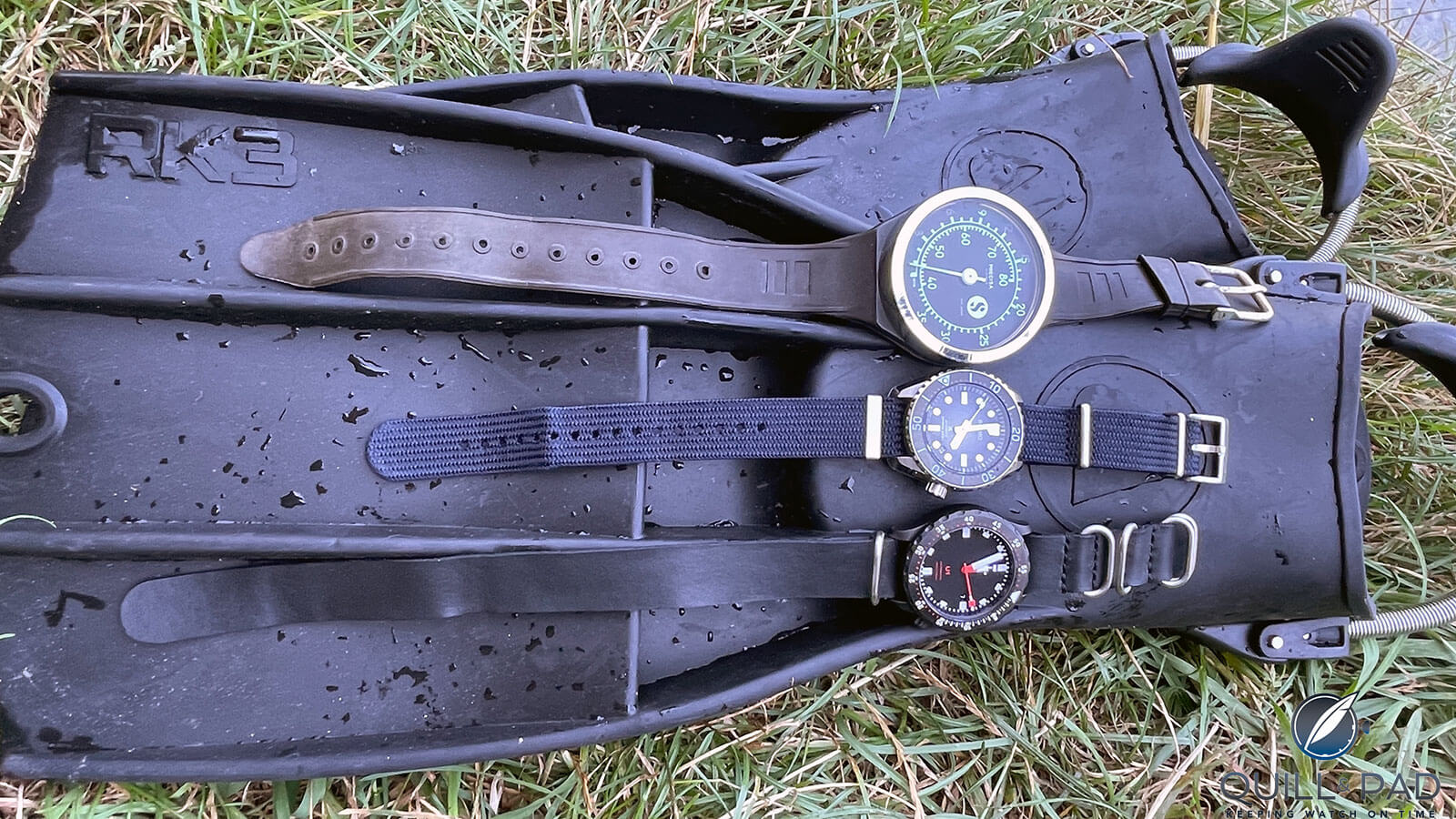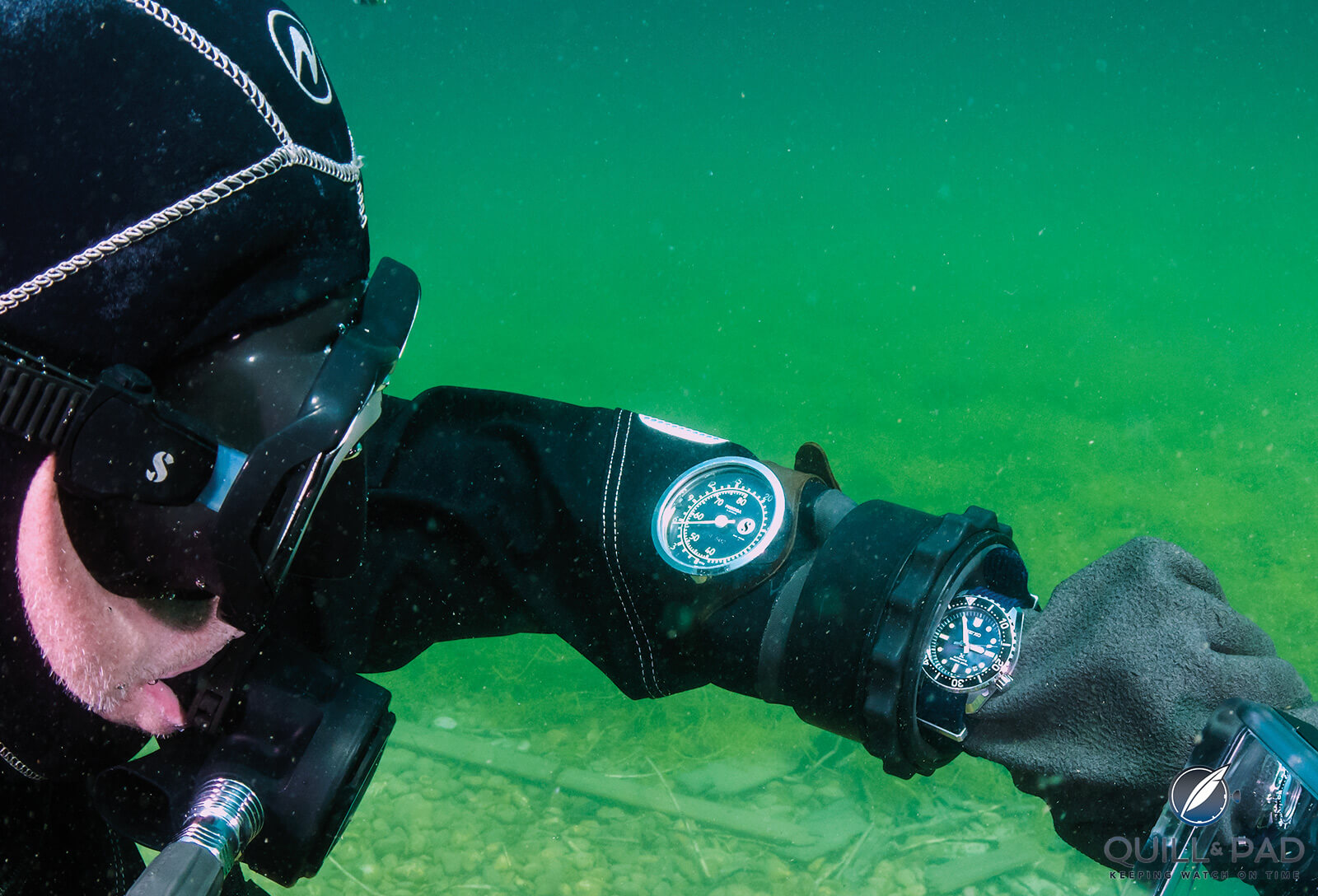Credits: Article and images by Dietmar Fuchs @ Quill & Pad. See the original article here - https://quillandpad.com/2023/10/22/real-world-diving-with-the-seiko-prospex-the-1968-automatic-divers-modern-re-interpretation-limited-edition-sla055-reprise/
————————————————————————————
Regular readers will know what I recommend: the double D-ring from a motorcycle helmet. This can be quickly loosened but holds tight in a bombproof manner.
And since in this case, the much-too-long strap worn on the naked arm would dangle in an unsightly way, it can simply be folded back through the eyelets and then looks as elegant as the doubled Seiko strap – without any annoying fumbling.


Seiko Prospex SLA055 ready to dive (photo courtesy Dietmar Fuchs)
About the movement
I normally don’t say much about the inside of the watch as it of no relevance for a diver, but because it’s the movement that (mostly) determines the price of a watch, I can’t just ignore it on a Seiko costing four and a half thousand Euros.
The reason for such a high price tag: inside the watch ticks a variant of the Grand Seiko base movement 9S55, uncharitably called the 8L35, but still the highest Japanese craftsmanship in watch caliber construction and, like the 9S55, assembled in the Grand Seiko manufacture in Shizukushi Prefecture.
In the words of the manufacturer, “The watch is powered by Caliber 8L35, which was specially developed for diving watches and is assembled by hand by the craftsmen at the Shizukuishi Watch Studio in northern Japan.
The movement’s robustness and precision ensure the best possible performance in the most demanding conditions, both on land and underwater.”
Which makes me curious as to whether the craftspeople test the watch right away in Gosho Lake, which is only a few hundred meters away?
Diving watch of the future?
I always regret it when a real dive test goes so smoothly. The high-quality diver’s watches in my test series are all tight and, as a rule, very easy to read. Neither the manufacturers nor the occasional divers seem to be interested in anything more.
Perhaps it’s because most divers still wear computers on their wrists anyway, or – more recently – the unbeatably practical Garmin watch computers. Or perhaps soon the same type of thing from Apple/Oceanic (at the time of my Seiko test, the Oceanic software was not yet available).
Not so with me. During my leisure dives on compressed air (not deeper than 30 meters) I exclusively use one of my dive watches, a depth gauge, and the simple “90 rule” in my head. I wish for nothing more than a visually attractive depth gauge to go with a beautiful diver’s watch like the “Daitō Tokei.”
90 rule: 90 minus two times the depth (in meters) = no decompression time. So a dive at 30 meters must be stopped after 30 minutes (90-2 x 30 = 30).


Seiko Prospex SLA055 on the wrist while diving with a depth gauge (photo courtesy Dietmar Fuchs)
Yes, I know that the depth gauge needs to be a bit bigger, but divers aren’t really fashion-conscious adventurers, either.
Besides, the trend in diving watches has already reached 45 millimeters in diameter and more (which is almost too big for me) so why shouldn’t the matching membrane depth gauge be a bit bigger than the watch?
Blancpain’s X Fathoms has led the way, but unfortunately, this exceptional watch is also exceptionally expensive.
————————————————————————————
Credits: Article and images by Dietmar Fuchs @ Quill & Pad. See the original article here - https://quillandpad.com/2023/10/22/real-world-diving-with-the-seiko-prospex-the-1968-automatic-divers-modern-re-interpretation-limited-edition-sla055-reprise/











